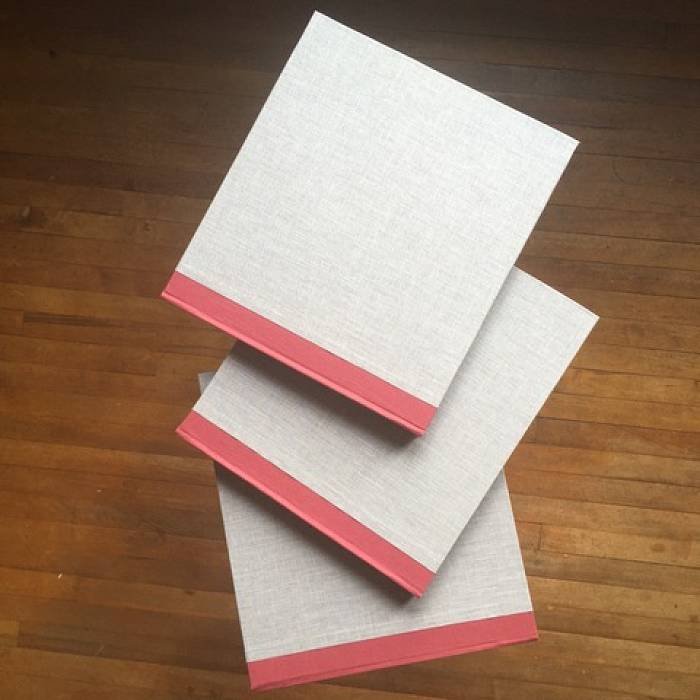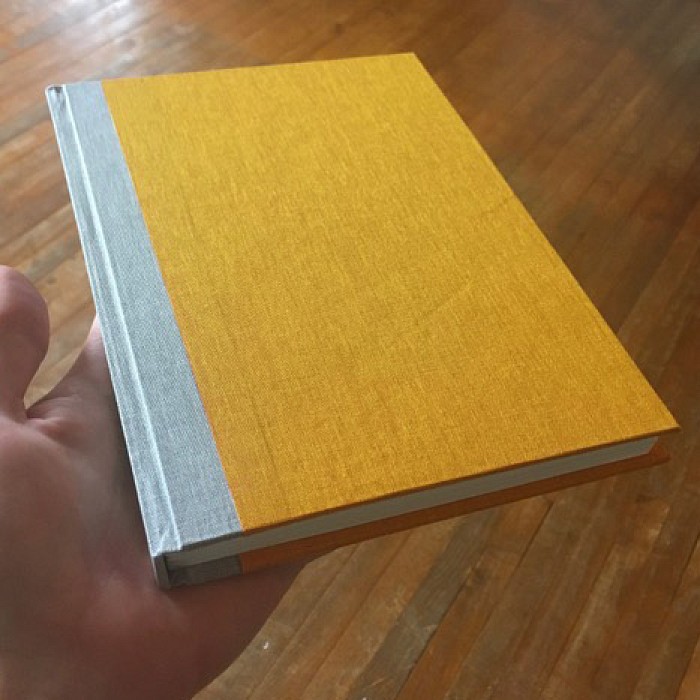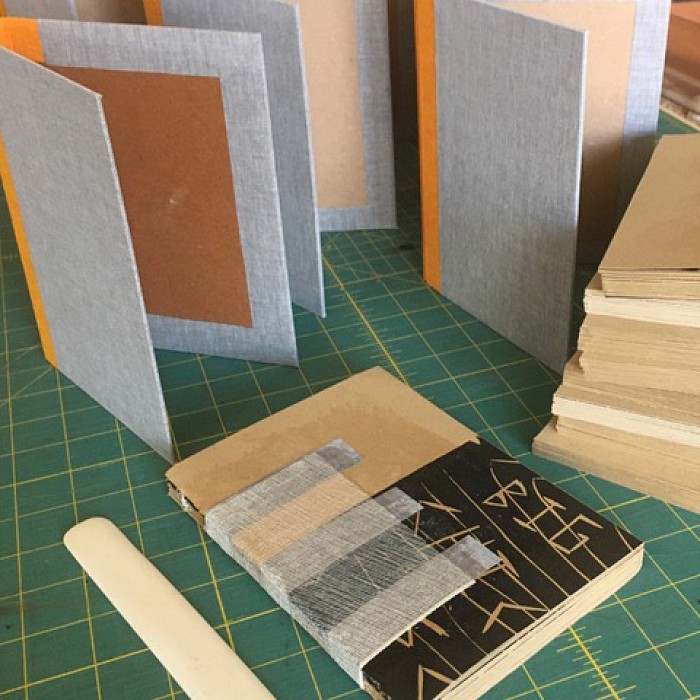
Online Courses
Hardcover Codex Bookbinding: Online Course
Course Overview
This course will cover the basic tools, techniques and design elements involved in the construction of a hardcover book. Codex binding is the style of binding often seen today in hardcover books where groups of pages called signatures are stitched together and then attached to a hard case. Over the course of three class sessions students will assemble all parts of a book. The format for the class will be prerecorded videos of a step by step approach to bookbinding released each week prior to the actual class date. Students will have the ability to work on their books prior to class meetings or during the class time, but the instructor encourages students to work ahead of the class time using the prerecorded guide and then come to class with questions or troubleshooting to address. Aside from the paper, bookcloth, and glue, most of the materials for this course are tools that can be used again to make more books in the future. Each student will take away from the course a handmade sketchbook or journal, have access to the step by step videos on bookbinding for future use, as well as the introductory knowledge and tools to further explore book arts with confidence.
Required Tools
You will need the following tools for this class:
Students need to find or purchase the following materials ahead of time for this class. You will also need a laptop or tablet with a reliable internet connection. Links for purchasing items through DickBlick are provided: expect to spend about $75 if you don't have any of these on hand already.
Utility Knife
https://www.dickblick.com/products/alvin-premium-utility-knife/
It can be handy to have a knife blade that is a single bevel for trimming the edge of the text block. A marking knife or a knife where there is at least 1 1/2” of blade showing when extended is useful though not entirely necessary.
Needles
https://www.dickblick.com/products/lineco-binders-needles/
Blunt leather or cloth sewing needles can also work
Glue brush
https://www.dickblick.com/items/24922-5012/
A chip brush or disposable brush of some sort will work also
Bone Folder
https://www.dickblick.com/items/64214-1678/
Awl
https://www.dickblick.com/items/12842-1000/
Cutting surface
https://www.dickblick.com/items/57559-2585/
This could also be a scrap piece of plywood or tabletop you don’t care about destroying
Straight Edge
https://www.dickblick.com/items/blick-heavy-duty-t-square-12-long/
This can be a ruler though it is incredibly useful and almost necessary that it can find a 90 degree angle.
Pencil
Wax paper
Heavy object with a flat surface
This is for clamping the book once it is glued, you can also make a book press from some plywood and 4 bolts with wing nuts. I use a piece of railroad track or some old textbooks with a heavy object placed on top like a bowling ball. If you have bar clamps of any sort and some plywood that will work too
Paper
The price of paper varies depending on the size of book you intend to make. A great paper I use for drawing and writing is Legion Stonehenge Paper. Specifically I have found a great paper size to get the most for your money is the white, 26” by 40” paper here https://www.dickblick.com/items/10423-1006/ to make a book that is roughly 3/4” or 1” thick and 10” tall by 6” wide you will need 3 sheets exactly. To make a larger book you will need more paper. The paper must be cut and folded with the grain of the paper in mind. If you are going to use paper you already have check that it folds the correct direction. To do this feel which way it is easier to fold the paper, the long way or the short way. Whatever direction offers the least resistance is the way the paper needs to be folded. For the paper I have linked, it folds easiest in half on the 26” axis, allowing your book to be a maximum of 13” wide. Most efficiently used this paper produces signatures that are 6.5” wide by 10” tall.
Whatever paper you get can be worked with just make sure to purchase enough. If you have leftover paper then it is just another book waiting to be bound! I suggest for first time bookbinders to use the Stonehenge 26 by 40 paper I have linked above. 3 sheets will make you one book roughly 96 pages. You can also make 2 books half that thickness, around 45 pages long, out of the 3 sheets. I recommend students purchase at a minimum 4 sheets, in case something goes awry. If you think you will enjoy bookbinding I would pick up 6 sheets so you have pages for the next book already.
Book Cloth x2
https://www.dickblick.com/products/books-by-hand-book-cloth/
You will likely want 2 colors for the book, the color is up to you. Other options for the covers of the books include old wallpaper samples, heavier weight colored paper, thin leather such as pig or sheep skin a great source of which is https://theleatherguy.org but I recommend book cloth for first time bookbinders.
The final option here is to use your own fabric, which involves ironing on a backing to the fabric. You can use and iron on adhesive such as HeatnBond to create a book cloth of your own with fabric you already have. If you choose this option, please make sure the fabric you use is bigger than the size of the book you want to make by at least 4 inches. Each dimension. Example of making your own book cloth- for a finished book that is 5” by 7” you will need a piece of book cloth at least 9” by 11” for each side plus the spine which would measure 5” by 11” If that is all the same piece of fabric then the total size would need to be 11” wide by 23” long strip of cloth. Again, for beginner bookbinders, the store-bought book cloth is a great way to ensure success.
Chip Board
https://www.dickblick.com/items/chipboard-22-x-28-x-30-ply/
The alternative to chip board is actual binders board. The difference here is that binders board is archival quality so it is acid free and will be around forever so long as it is taken care of properly. I use chip board myself, but if you do want book board here is a link https://www.dickblick.com/products/lineco-acid-free-binders-board/ though the price is substantially more.
PVA Glue
https://www.dickblick.com/items/12844-1005/
Linen Thread
https://www.dickblick.com/products/books-by-hand-linen-bookbinding-thread/
Lineco Super
https://www.dickblick.com/items/12829-0003/
Beeswax
https://www.dickblick.com/products/lineco-bees-wax/


